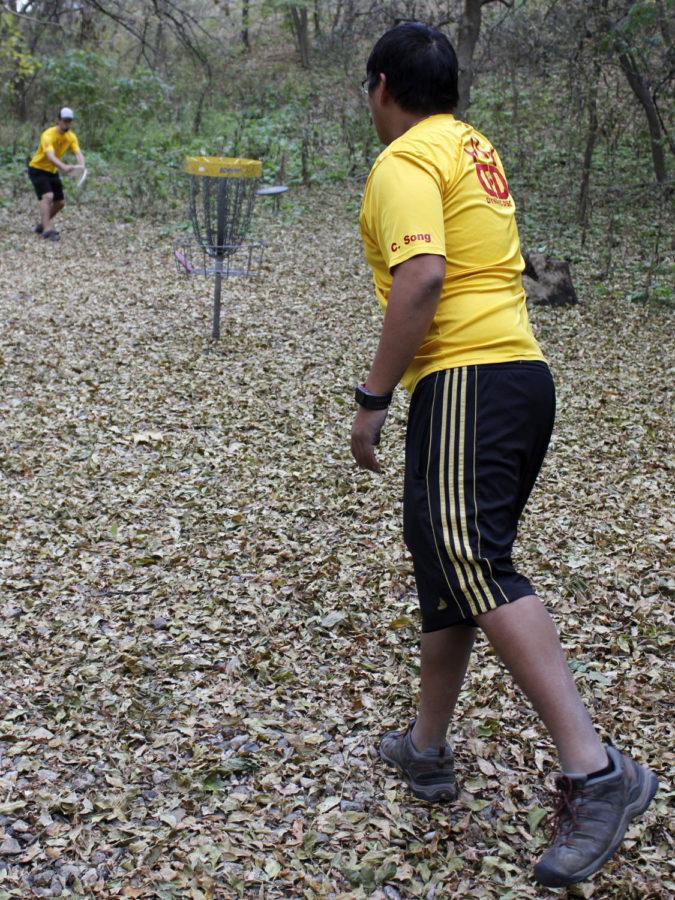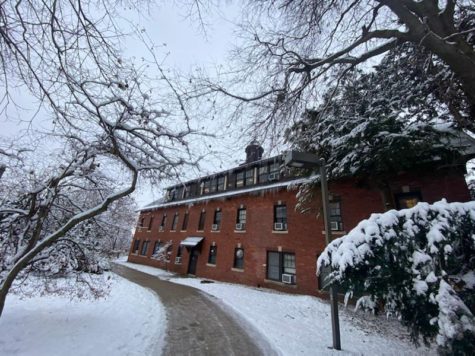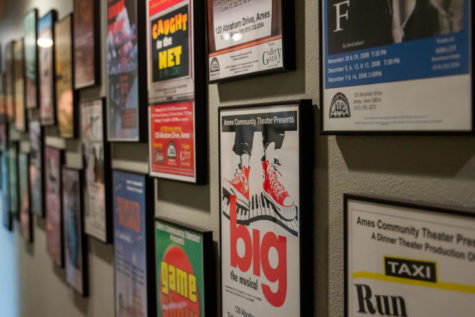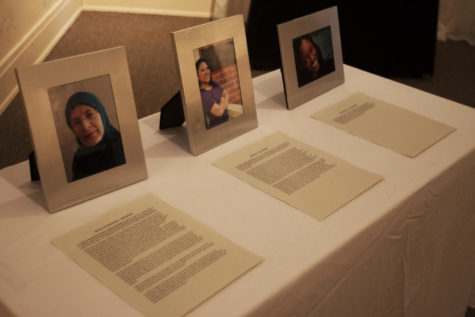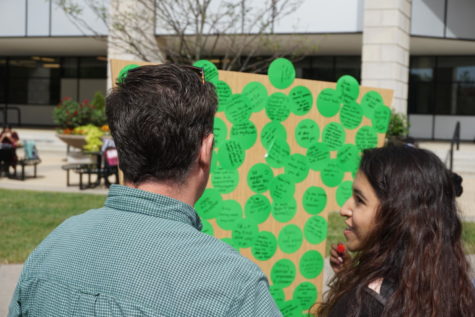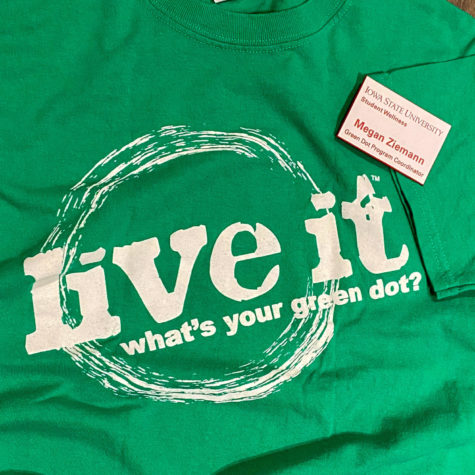Ames disc golf courses give students an alternative sport
Caitlin Ellingson/Iowa State Daily
Sophomore Calvin Song, right, is the president of the Iowa State Disc Golf Club, in which members practice for recreational and competitive disc golf.
August 3, 2015
The two disc golf courses in Ames provides students with a relaxed competiveness they can enjoy almost all year round.
Mitch Zaplatosch, senior in pre-dietetics and exercise, hits the course once a week to spend time with his friends.
“It’s a chance to get out, enjoy the weather, and it’s something to do,” he said.
Zaplatosch had not played the game until this summer.
“I think I’m improving, so that’s good,” he said. “It feels good when you get it really close.”
Disc golf is a sport that people of all skill levels can enjoy. Beginners can leisurely go through the course and use tees designed for recreational use, while competitive players can use more advanced tees.
The two courses in Ames allow for different styles of play.
The Carroll Marty Disc Golf Course, which is located in Gateway Park just south of the Wallace and Wilson Residence Halls, is longer and boasts many elevation changes.
On the north side of Frederiksen Court on 13th Street is Stable Run Disc Golf Course. This course is more compact, flat and wooded compared to the Carroll Marty course.
While Zaplatosch plays for fun, some students play to improve their scores and technique.
Disc golf is similar to golf in that the object of the game is to own the lowest score. On every hole, players try to get their discs into the basket in the least amount of attempts possible.
Several techniques are used for throwing the disc. The most common is the back-handed throw, which is the same as a normal disc toss with the back of the hand facing the hole.
The sidearm or forehand toss is similar, but the wrist flick is from the other direction with the palm toward the hole.
Occasionally, the game calls for a special throw called the tomahawk or overhand throw. As it sounds, this throw starts with the disc vertically aligned above the shoulder and proceeds with a downward throwing motion. It is the same as throwing a tomahawk.
Not only are throwing styles different, but the discs themselves also vary.
The three types of discs include mid-range, distance and putting. Different discs are used in different situations. Near the hole, a putter disc works best. But when teeing off from a distance, a distance disc or driver is the better option.
Each disc also has a set of numbers that indicate slight differences in how the disc will travel.
The set of four numbers indicate the speed, glide, turn and fade of the disc.
The speed number tells how quickly a person must throw the disc for it to fly as it was designed to.
The glide number tells how much float the disc has. The higher the number, the higher the glide.
Turn indicates how much the disc will turn or change direction mid-flight. The direction depends on which hand the player throws with and what style of throw is used.
The final number is the fade, which tells how much the disc will curve back to the original direction it was thrown.
Students have the opportunity to be technical and competitive and use different discs and throws or just spend an afternoon playing with friends.
On a sunny, summer afternoon, some students remaining in Ames can be found at one of two disc golf courses enjoying free time with their friends.
Mitch Zaplatosch, senior in pre-diet and exercise, hits the course once a week to spend time with his friends.
“It’s a chance to get out, enjoy the weather and it’s something to do,” Zaplatosch said.
Never having tried disc golf until this summer, Zaplatosch started as a beginner.
“I think I’m improving, so that’s good,” he said. “It feels good when you get it really close.”
Disc golf is a sport that people of all skill levels can enjoy. Beginners can leisurely go through the course and use tees designed for recreational use, while competitive players can use more advanced tees.
The two courses in Ames allow for different styles of play.
The Carroll Marty Disc Golf Course, which is located in Gateway Park just south of the Wallace and Wilson Residence Halls, is longer and boasts many elevation changes.
On the north side of Frederiksen Court on 13th street is Stable Run Disc Golf Course. This course is more compact, flat and wooded compared to the Carroll Marty course.
While Zaplatosch plays for fun, some students play to improve their scores and technique.
Disc golf is similar to golf in that the object of the game is to own the lowest score. On every hole, the player tries to get their disc into the basket in the least amount of attempts possible.
There are many techniques used for throwing the disc. The most common is the backhanded throw. The backhanded throw is the same as a normal disc toss with the back of the hand facing the hole.
The sidearm or forehand toss is similar but the wrist flick is from the other direction with the palm toward the hole.
Occasionally, the game calls for a special throw called the tomahawk or overhand throw. As it sounds, this throw starts with the disc vertically aligned above the shoulder and proceeds with a downward throwing motion. It is the same as throwing a tomahawk.
Not only are there different throwing styles, but the discs themselves vary.
There are three types of discs: mid-range, distance and putting. The type of disc used is dependent on the situation. Near the hole, a putter disc works best. But when teeing off from a distance, a distance disc or driver is the better option.
Each disc also has a set of numbers that indicate slight differences in how the disc will travel.
The set of four numbers indicate the speed, glide, turn and fade of the disc. The speed number tells how quickly a person must throw the disc for it to fly as it was designed to.
The glide number tells how much float the disc has. The higher the number, the higher the glide.
Turn indicates how much the disc will turn or change direction mid-flight. The direction it will change is dependent on which hand the player throws with and what style of throw is used.
The final number is the fade, which tells how much the disc will curve back to the original direction it was thrown.
Students have the opportunity to be technical and competitive and use different discs and throws or just spend an afternoon playing with friends.

